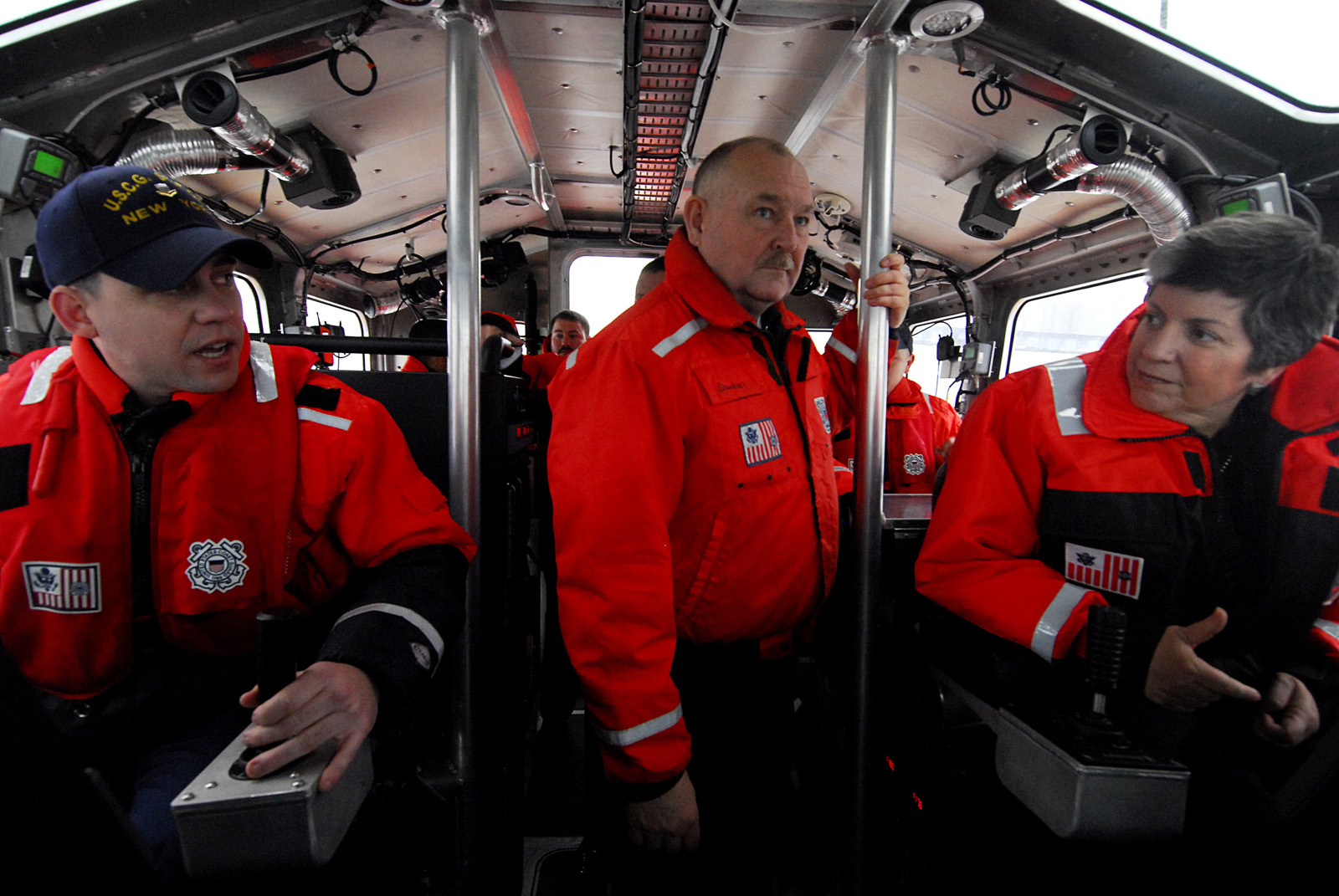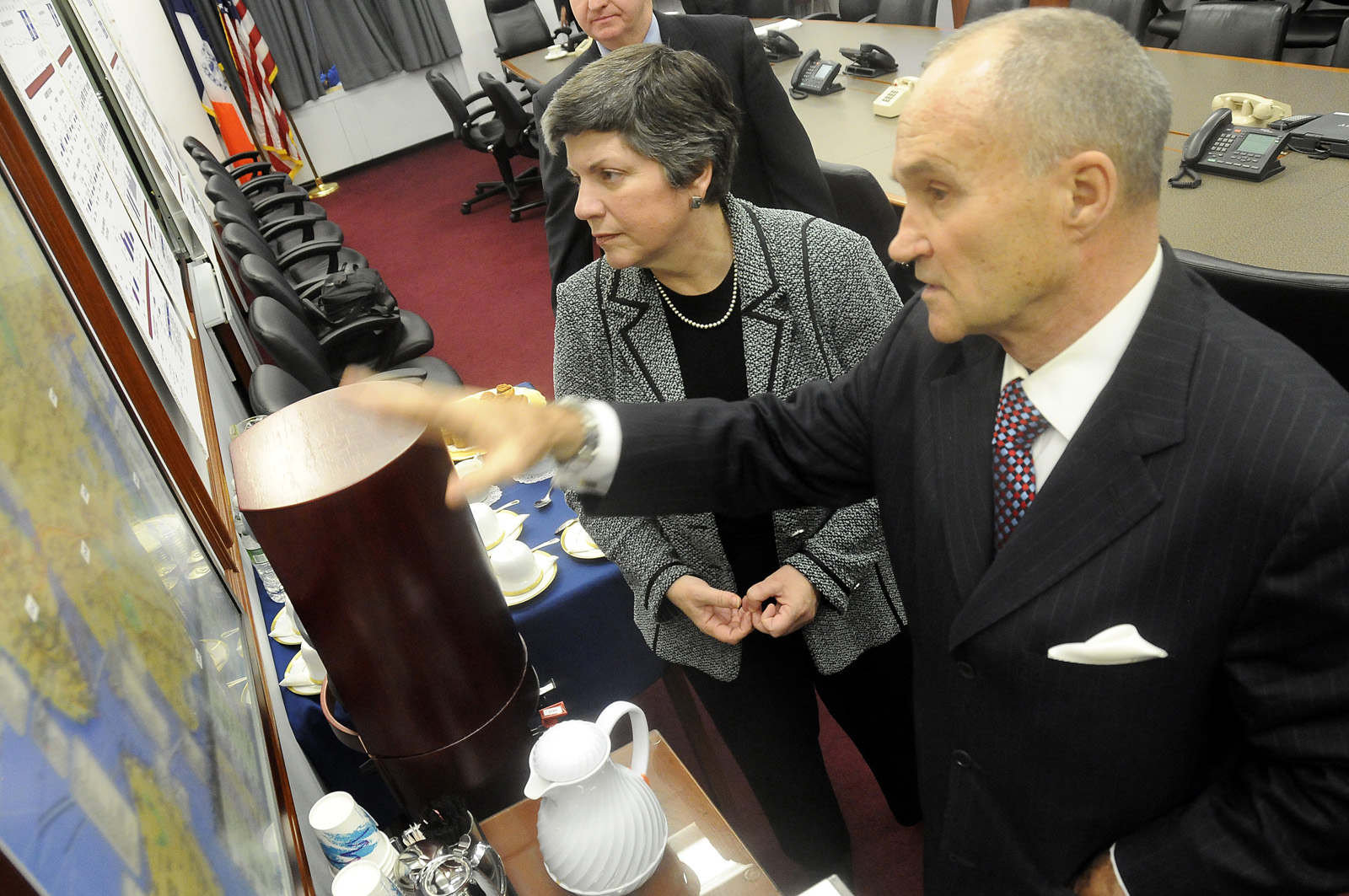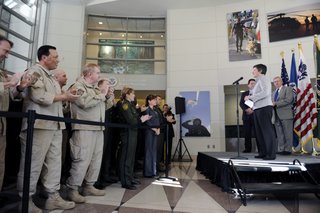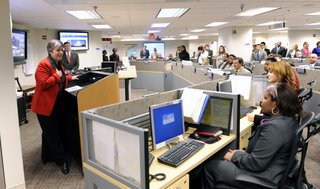Honoring Flight #1549

Last week I went to New York to honor the men and women who aided the rescue of US Airways #1549.
By now, we all know the heroic tale of the pilot and crew who landed the distressed plane in the middle of the Hudson River against impossible odds.
What is less known is the immense rescue operation that took place immediately afterward and the heroism of dozens of individuals who put their own lives in danger to ensure that everyone on the aircraft made it safely to shore.
Among those responders was Coast Guard Petty Officer Ben Foster, who after seeing a passenger slip and fall from the plane’s icy wing, entered the frigid water to rescue her. In the process, he ruptured an artery in his leg, putting himself in even greater danger. He remained at the scene for hours, seeking medical attention only later that evening.
For his service, the Coast Guard awarded Petty Officer Foster the Meritorious Service Medal. The Coast Guard also awarded a Unit Commendation to its Incident Response Team, and it awarded Petty Officer Brittany Catanzaro – a member of the Coast Guard reserve – with a Meritorious Public Service Award.
Also assisting in the rescue were numerous independent boaters, water taxi operators, and ferry services. These Good Samaritans dropped what they were doing and rushed to the sinking aircraft to see how they could help. They worked side-by-side with first responders and law enforcement to ensure all 155 passengers and crew were safely rescued.
To honor their service, the Coast Guard awarded the Certificate of Merit to New York Water Taxi, Ken’s Marine, Miller’s Launch, World Yacht, and The Staten Island Ferry.
It awarded the Public Service Commendation to Circle Line Sightseeing and issued the Meritorious Public Service Award to Mr. Scott Koen. And it gave the Distinguished Public Service Award to New York Waterway.
Without this support, the triumph we celebrate today could have easily turned tragic.
These efforts remind us that individuals and businesses often have an important role to play during emergencies – even serving as first responders. As Secretary, one of my priorities is to continue to expand our engagement with citizens and businesses who want to be involved in our efforts. We have a lot to gain from their participation.
The rescue also reminds us of the importance of training and exercising before the fact. First responders at all levels must know what to do when it comes time to execute a mission – because seconds count. The successful rescue of Flight #1549 is a case in point
Janet Napolitano
The Coast Guard Public Service Awards Ceremony
Labels: first responders, Flight #1549, partnerships, state and local partnerships, USCG











